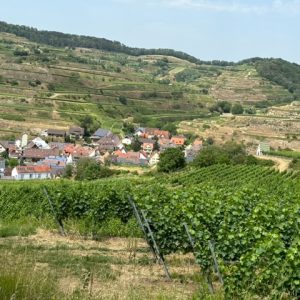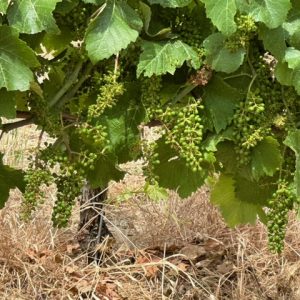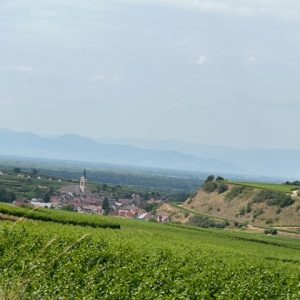Kaiserstuhl — Germany
I am very grateful to my good friend Alex for encouraging me to visit his hometown of Freiburg. As I discovered, Freiburg is a wonderful and vibrant university city in southwest Germany’s Black Forest (see photo).
But what Alex had most in mind is that Freiburg is located near the wonderful Kaiserstuhl wine area.
Kaiserstuhl means “emperor’s seat,” and its history dates back to 994 AD when a monarch held court in this settlement. Wine growing on the Kaiserstuhl was most likely done during Roman times, and it has been documented from 769.
The region is a cluster of volcanic hills, northwest of Freiburg. It is on the eastern banks of the Rhine river, and is just a few kilometres from the French border. The vineyards of sunny Alsace lie less than 30 kilometers away, due west.
Kaiserstuhl is Germany’s most southern and warmest wine region. The climate is borderline Mediterranean. Thus, it produces exceptional Pinot Noir, Pinot Gris, and Pinot Blanc. Indeed, the region is known as the “Home of Three Pinots.”
The region is unique in Germany in that it produces very little Riesling, the normal mainstay of German wine. And that red wine from the Pinot Noir grape is predominant. The locals even refer to their Pinots as Burgundy — Spätburgunder (Pinot Noir), Grauburgunder (Pinot Gris) and Weissburgunder (Pinot Blanc).
Global warming and consumer preferences have had a noticeable effect on the wines of the Kaiserstuhl in recent decades. They are steadily becoming richer and more powerful and are now among the fullest bodied of all German wines.
Due to bad planning on my behalf, I only had a few hours to visit the Kaiserstuhl region. So I visited Oberbergen, a nice village surrounded by vineyard terraces climbing up fairly steep hills.
The area around Oberbergen is a wine walker’s paradise. I scrambled up fairly high amongst the terraces, from which there are stunning views of the valley below (see photo).
When I descended, I tasted some lovely wines at the local winemaker. The Pinot Blanc was outstanding, and the pinot noir very good.
I also tried a Müller-Thurgau, which was much less impressive. — light, sweet and lacking intensity. Müller-Thurgau is a white grape variety which was created by Hermann Müller from the Swiss Canton of Thurgau in 1882 at the Geisenheim Grape Breeding Institute in Germany. It is a crossing of Riesling with Madeleine Royale.
Kaiserstuhl is the fifth wine area that I have now visited in Germany, and it is by far the most impressive.





